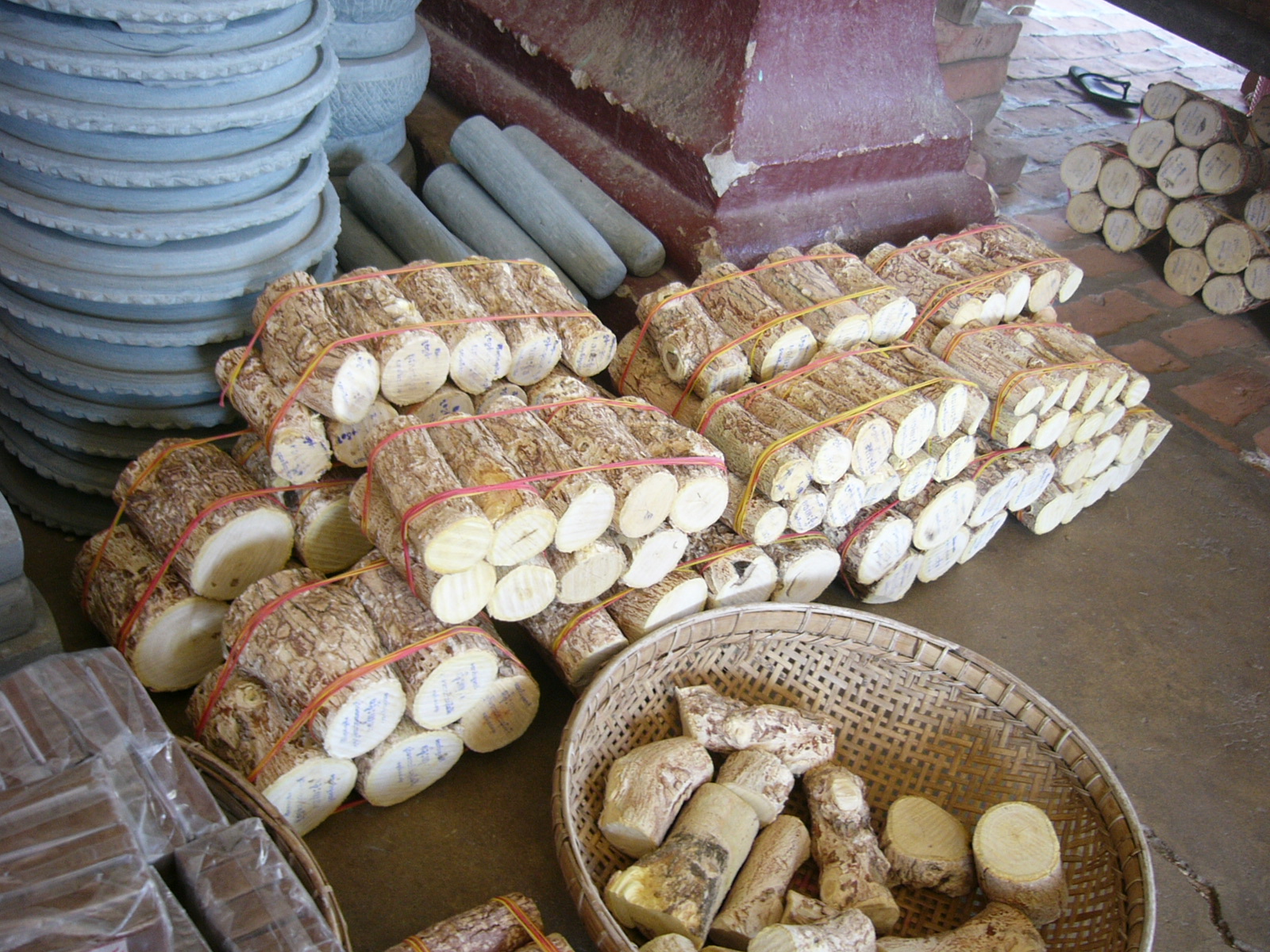Thanaka
Thanaka is a yellowish- white paste consisting of finely grated bark. In Myanmar, they shall be removed from children and women at any age in the face and is casually referred to as Burmese makeup.
Thanaka is ( Murraya paniculata or M. exotica ) obtained from the bark of the Indian wood apple tree ( Limonia acidissima Roxb. ) Or from an entity belonging to the Orange diamonds kind belonging to the family of Rutaceae and are common in Southeast Asia. There are small trees with slender stem. Thanaka trees are called in Thailand Ma - Khwit, Cambodia Kramsang in Laos Ma -fit and Malaysia Gelinggai. The designation as sandalwood is falsely under this term are some similar but not the same species of wood together.
The Indian wood apple tree is a maximum of ten feet tall and blooms in May and June; the spherical, apple-sized fruit with a hard shell mature in November and December. The flesh is dark brown and musartig and tastes of jam. The wood of the tree is very hard, yellowish in color and gives off a pleasant scent. The best Thanaka is derived from older, about 35 -year-old trees.
In trading, you can either paste the finished ground or buy pieces of wood of at least five centimeters in diameter, touch their bark consumers on a designated rubbing stone with water. On each market, many temple entrances and on the streets, the ingredients are offered piled to mountains.
The Thanakapaste is used by young and old as natural cosmetics. It gives the face a fresh, youthful appearance, protects against UV radiation from the sun and cooling. It also has the reputation of acting against skin aging and cough and cold remedy in case of illness. While women and children mostly the face ears and neck rub up on the cream, the boys mostly confined to the cheeks. Young women give themselves gladly particularly bother with make -up, which is why sometimes beautiful round or rectangular patterns adorn the face.










